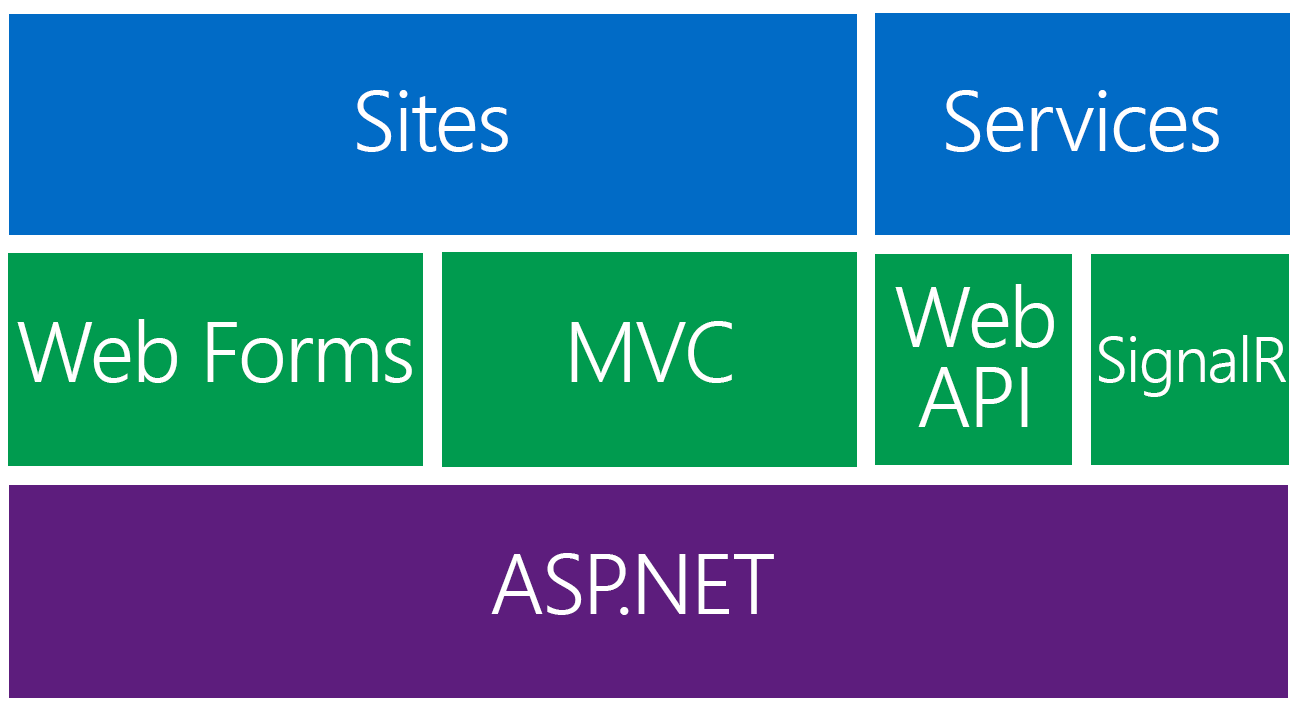Introduction to ASP.NET
ASP.NET Website
ASP.NET evolved from it's predecessor active server pages (ASP), which was Microsoft's first attempt at creating a Web server application framework that would run on top of their Internet Information Service (IIS). IIS was free Web server software to came with Microsoft operating systems.
ASP.NET is an open source web framework for building modern web apps and services with .NET. ASP.NET creates websites based on HTML5, CSS, and JavaScript that are simple, fast, and can scale to millions of users.
ASP.NET is a subset of the .NET framework and contains libraries of classes related to Web applications and Web services. ASP.NET gives developers the power to dynamically generate content, HTML, JavaScript, and CSS on the Web server and then package the results in a format consumable by the Web client.
Major components of the ASP.NET framework
The latest iterations of the Visual Studio ASP.NET Web Forms and MVC Application templates include integration of and support for Bootstrap, jQuery, and Respond.
One ASP.NET

Tooling
In order to develop killer Websites you need a
good set of Web Tools. Visual Studio includes many tools which are
beneficial for Web developers including but not limited to:
HTML (Web Forms) Editor
CSS Editor
JavaScript Editor
C# Editor
Database Table Editor
Intelli-Sense:
- Auto-closing tags
- Auto-complete, context sensitive by giving only the
applicable options for the statement being coded
- Document reducing statement lists (context menus become more
specific as you type more characters in a search string).
- Snippets
- Collapse-able elements
Web Essentials:
Tells which versions of which browsers a CSS rule will work on.
Ability to select any installed Web browser to test code with,
also the ability to use multiple Web browsers simultaneously and have them all
updated with the single click of the Refresh button
in Visual Studio.
ASP.NET Directives
ASP.NET includes several directives for specifying
settings that are used by the page and user-control compilers when
the compilers process ASP.NET Web Forms pages (.aspx files) and user
controls (.ascx files). ASP.NET treats any directive block (<%@ %>) that does not contain an explicit directive name as an @ Page directive (for a page) or as an
@ Control directive (for a user control).
For syntax information and descriptions of the attributes that are available for each directive, use the links that are listed in the following table.
Directive | Description |
|---|
@ Assembly | Links an assembly to the current page or user control declaratively. |
@ Control | Defines control-specific attributes used by the ASP.NET page parser and compiler and can be included only in .ascx files (user controls). |
@ Implements | Indicates that a page or user control implements a specified .NET Framework interface declaratively. |
@ Import | Imports a namespace into a page or user control explicitly. |
@ Master | Identifies a page as a master page and defines attributes used by the ASP.NET page parser and compiler and can be included only in .master files. |
@ MasterType |
Defines the class or virtual path used to type the
property of a page. |
@ OutputCache | Controls the output caching policies of a page or user control declaratively. |
@ Page | Defines page-specific attributes used by the ASP.NET page parser and compiler and can be included only in .aspx files. |
@ PreviousPageType | Creates a strongly typed reference to the source page from the target of a cross-page posting. |
@ Reference | Links a page, user control, or COM control to the current page or user control declaratively. |
@ Register | Associates aliases with namespaces and classes, which allow user controls and custom server controls to be rendered when included in a requested page or user control. |
ASP.NET Web Configuration Guidelines
ASP.NET Web Configuration Guidelines
Links of Interest
Links of Interest